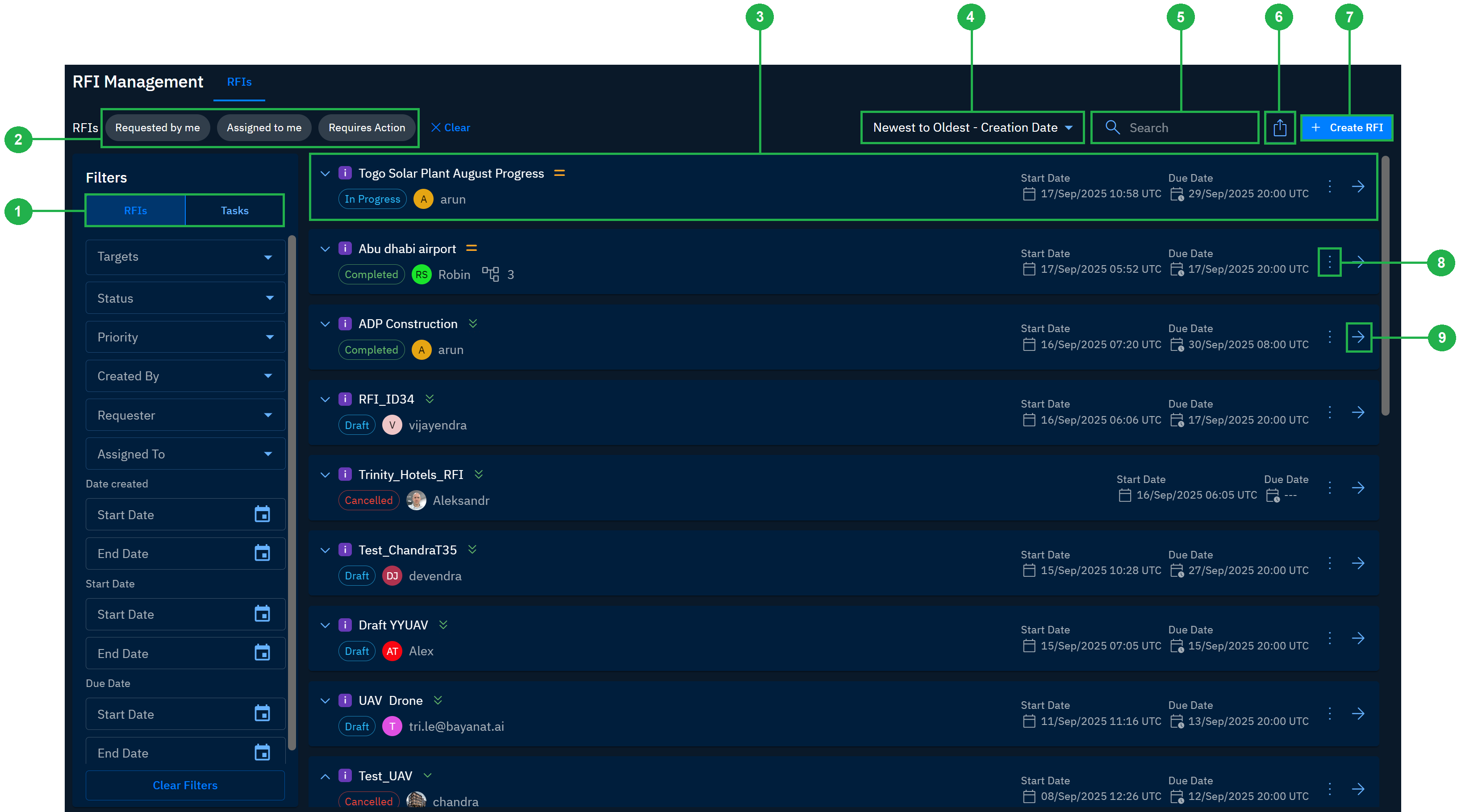Overview: RFI Management
In this section, you will learn how to use Request for Information (RFI) Management to request, coordinate, and deliver mission-specific information—such as imagery, documents, or text—across your organization.
A well-scoped RFI significantly reduces back-and-forth and speeds up delivery. You can define ownership at the RFI and task level thereby improving the follow-through. Priority and due-date tracking keeps teams aligned to operational windows. Validation and verification provide traceability and ensure quality before release.
Think of RFI as the container of a request. This request clearly states what information is needed, for which targets/AOIs, by when, and in what format. The request is broken into tasks that are assigned to a team member or team who gets the information.
Accessing RFI Management
In this section, you will learn how to access the RFI Management module.
To access RFI management module, do the following:
-
Login to the platform.
-
Click the Collaborate module, and then click the RFI Management module.
The RFI Management dashboard page is displayed.
-
On the RFI Management dashboard page, you can do the following:
1. Filter RFI and Tasks
2. Quick Filters to view RFIs requested by me, assigned to me, and requires action.
3. View individual RFI or Task from the existing or current RFI or Task list. If you’re new to the platform, you might not see any RFIs or tasks. Create an RFI to get started.
4. Sort RFIs or Tasks
5. Search RFIs or Tasks
6. Export RFIs
7. Create a new RFI
8. Click the More Options menu to access create tasks, extend RFIs, edit assignee, or copy URL.
9. Click to view details of an individual RFI or Task.
